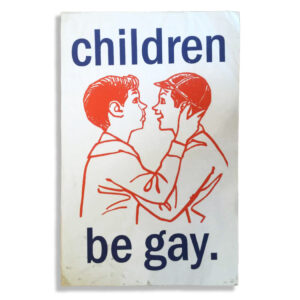God Bless Graffiti Coalition
Filters
Showing the single result
“God Bless Graffiti Coalition” is an organization that fought for the democratization of urban spaces and the decriminalization of graffiti practitioners in the early 2000s. Their mission statement is, “The God Bless Graffiti Coalition, Inc. was founded in 2000 in Chicago in order to combat growing national and international anti-graffiti trends. We feel the time has come that
people stand up against the massive misuse of public monies diverted towards graffiti abatement. Instead of spending millions to maintain the dull monotony of the urban landscape and to criminalize creative youth, the Coalition supports the work of graffiti writers, street artists, and their allies around the globe. As a support organization, GBGC has developed three main ways to aid in the spread of the gospel of graffiti. First, we publish educational materials that open the public’s eyes to the beneficial traits of graffiti and its practitioners. Second, we organize large scale exhibitions of graffiti and street art in order to bring artists together and further educate the general public. And third, we are continually monitoring, tracking, and compiling information about the activities of those evildoers trying to limit, criminalize, and crush free expression on our streets.” Their movement attempted to engage the public to break down the negative misconceptions around graffiti and build a new definition that encompassed the creative and inclusive aspects of graffiti.
The Coalition was interested in creating an inclusive environment for community members to participate in a creative practice, giving them the ability to express themselves in the urban environment. They reacted against the anti-graffiti attitudes in Chicago in the 1990s, which spent millions of public dollars in an attempt to eradicate graffiti instead of city services, creating brochures and public art that educated the public on the positives of graffiti. In 2004 GBGC curated a large-scale project at Mass MoCa, covering a giant wall with the works of graffiti artists. These projects were meant to democratize public space, as well as art institutions. The GBGC ended in 2006, but their message of graffiti as political tool remains relevant today.

